Hip belt pocket.
Hip belt pocket.
Couldn't load pickup availability
Free DHL delivery for orders over 85€. (1-4 bussines days)
Intro.
A small zipped pocket that can be attach to your hip belt using our hole webbing attachment system.
Materials.
Fabric 100% recycled polyester.
Weight.
32 grams.

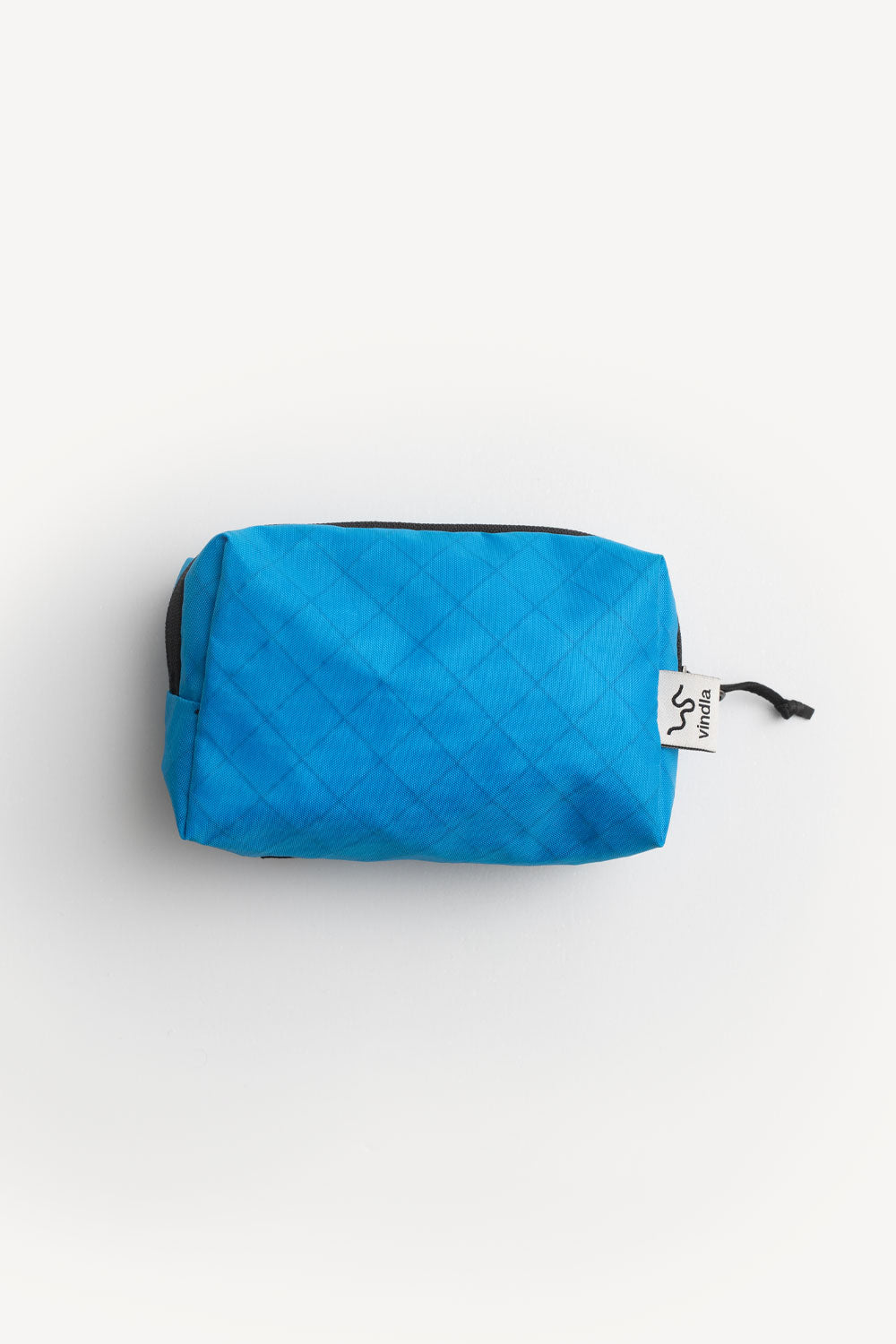
Shipping prices
Please enter your shipping address in our checkout to find your price. If your country is not available as an destination yet, please contact us at info@vindla.com, and we do our best to add your country. More countries will be added in the future.
Free shipping within Sweden and Eu on order value over 85 EUR. Order value below 85 EUR has a shipping cost of 5,5 EUR.
Shipping to Norway is 9,5 EUR.
Shipping to USA is 24 EUR.
Taxes and Duties
For all orders from European residents, prices include Swedish VAT at 25 %. All countries within the European Union are shipped to on a DDP (Delivery Duty Paid) basis, meaning that taxes and duties are included in the price at checkout.
Delivery
All orders are processed and shipped on weekdays and within 3 days after the order has been placed. All orders to Swedish residents are shipped with DHL Service Point and are delivered to your closest service point, normally within 2-3 days. Orders from other countries are shipped with DHL Parcel Connect(delivered your closest service point) or UPS, normally within 5-6 days. Once your order has been processed a trackingnr will be emailed to you.
Unclaimed packages
If the package is not collected by you as the customer and receiver within 7 days it will be shipped back to us. We reserve the right to charge you, the customer, for all the costs incurred in such return plus an added handling fee of 250 SEK
Returns & exchange.
Wrong size or not happy with your Norra product? No worries, you can change it or return it. We accept returns made within 30 days of you receiving the product.
The products must be in the same unharmed and mint condition as when you received it, with all tags and labels.
In the case of a return where the order value no longer exceeds the free shipping limit, the shipping cost will be charged.
If the entire order is returned, the shipping cost will be charged.
Please follow bellow steps:
Register your return with us.
Swedish customers, please register your return here: www.vindla.com/sv/retur/
For international costumers, please register your return by sending and email to return@vindla.com
Repack the item.
Use the original bag or similar container, sign the “Incase of emergency” slip and place it inside the bag.
Send it back.
Swedish customer: please use the pre-paid DHL return shipping label to send it back to us. Simply attach the label to the bag and return it to the DHL service point.
Costumers outside Sweden: you are responsible to pay for the return freight and that the goods arrives safety back at our office. We highly recommend to use a trackable shipping service and clearly mark the package with “RETURNED GOODS”.
Exchanges
The absolute easiest and fastest way to change size is to place a new order on the new size on the website. Then the new size is sent out immediately and there is no risk that the stock will run out before the returning item is back.
Refunds
When we have received your return will we inspect the products before any refunds are made.

Area of use.
Attach this pocket to the waist belt and get a zipped pocket with easy
access. Perfect for storing smaller items like snacks or your phone.
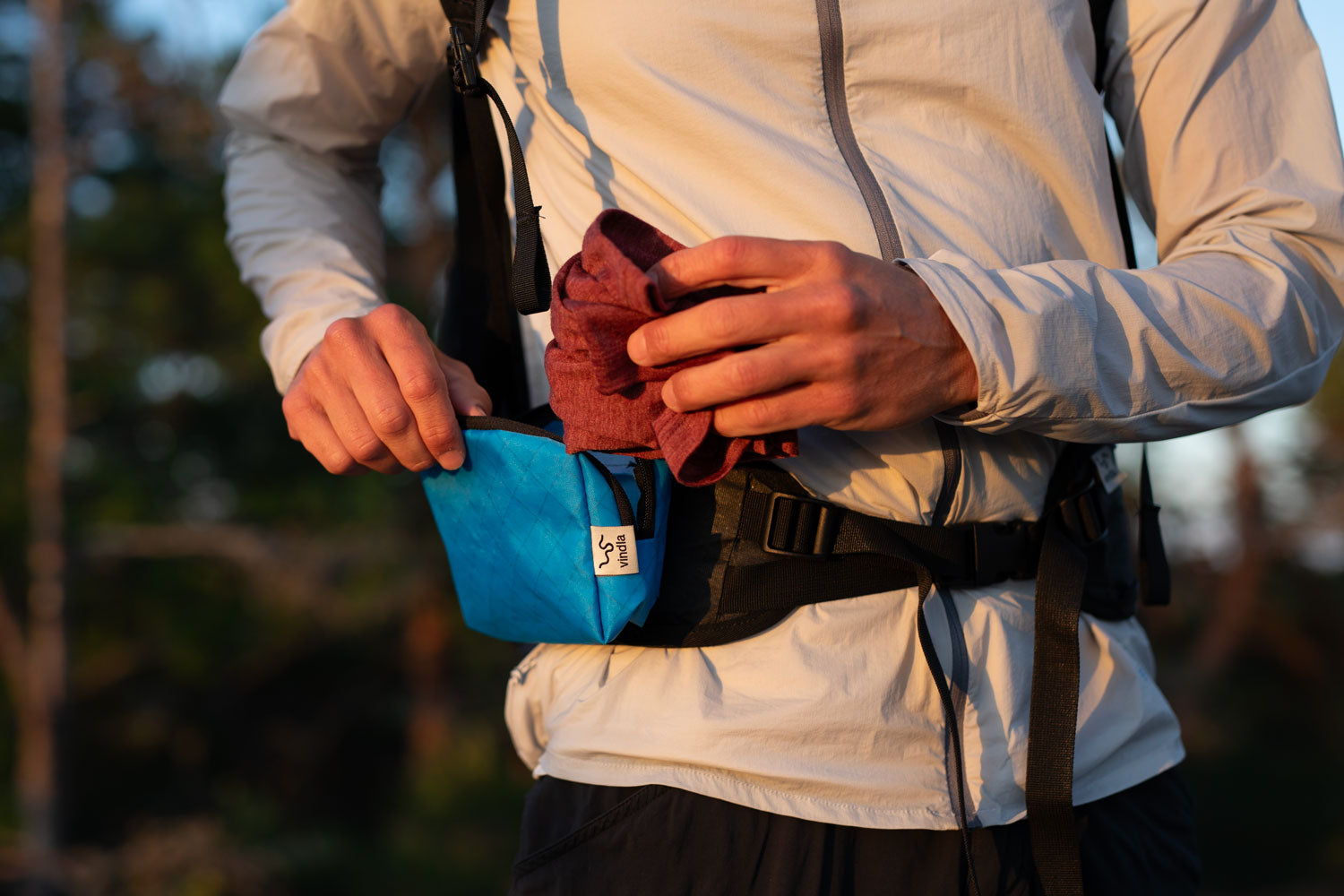
Product background.
Our backpack is a system where you can modify almost all parts. Adding details or removing making it even lighter. This hip belt pocket is one of our accessories, perfect of those of you whom like a quick access and zipped storage on your hips.
Utilising the hole webbing system, that is one of the key elements of the system, this pocket sist securely on your hips.
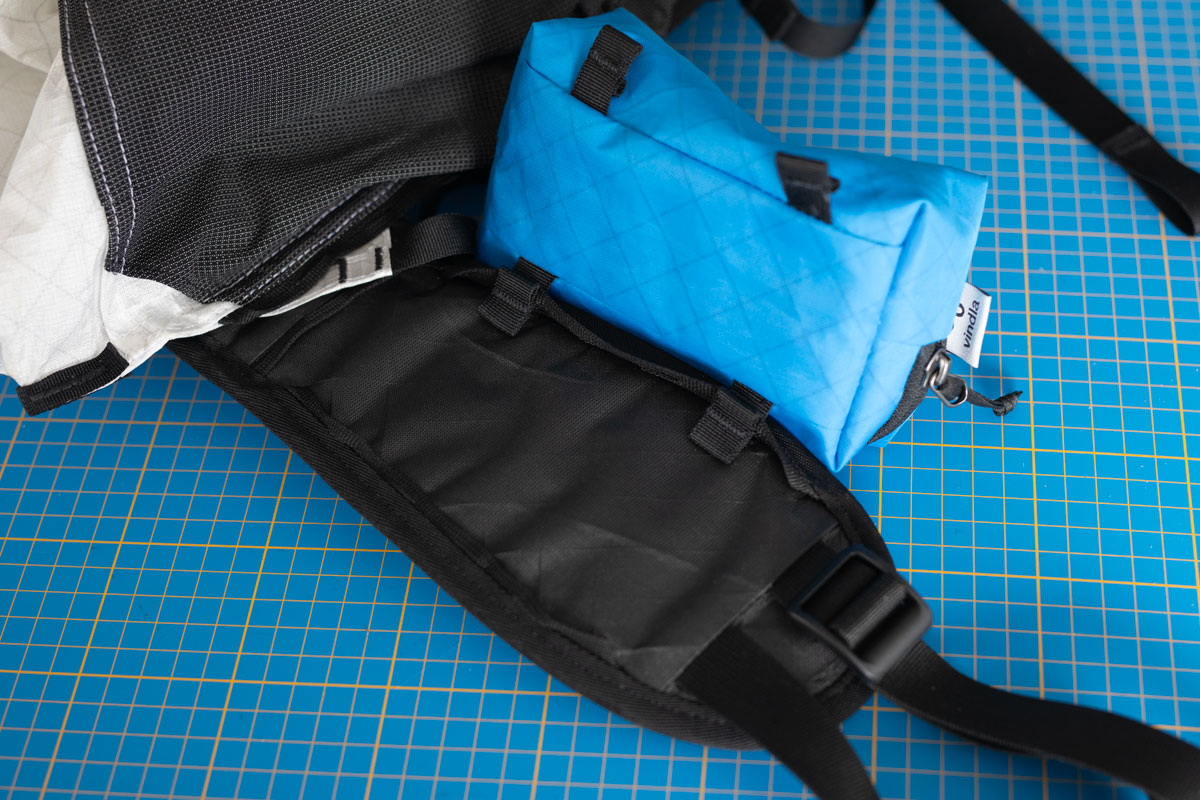
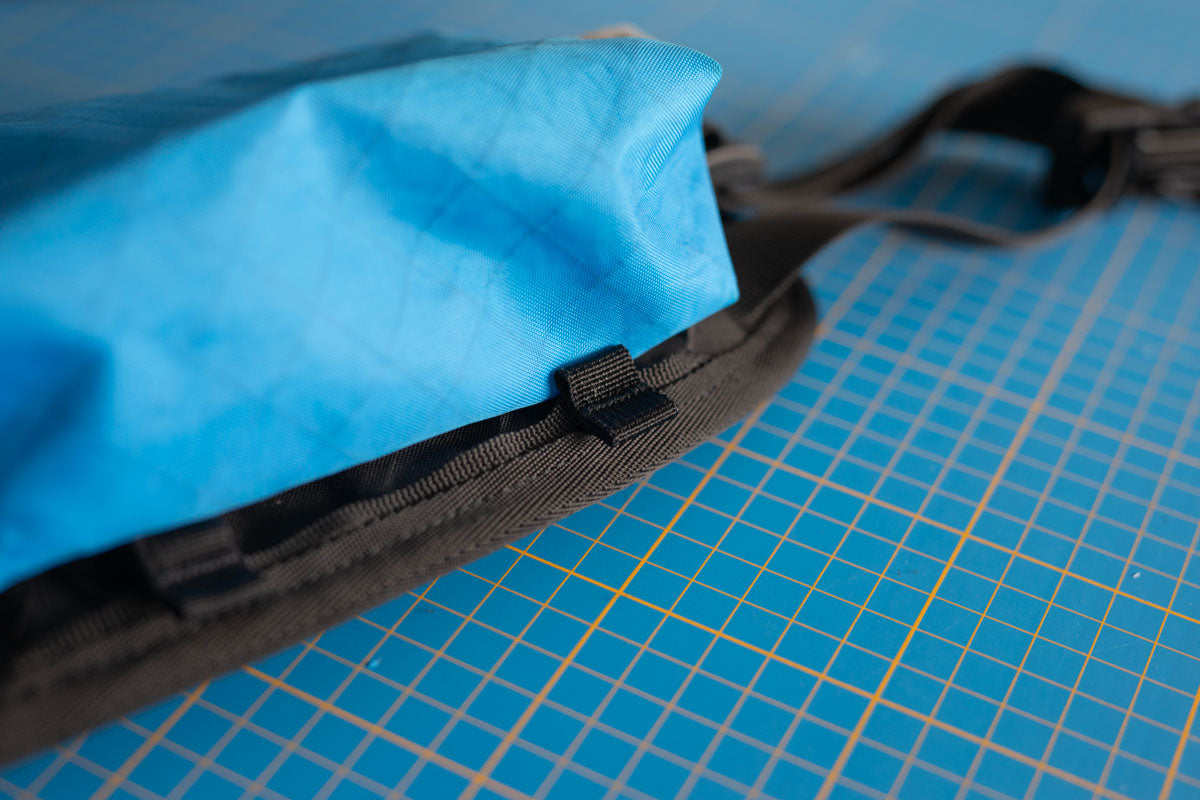
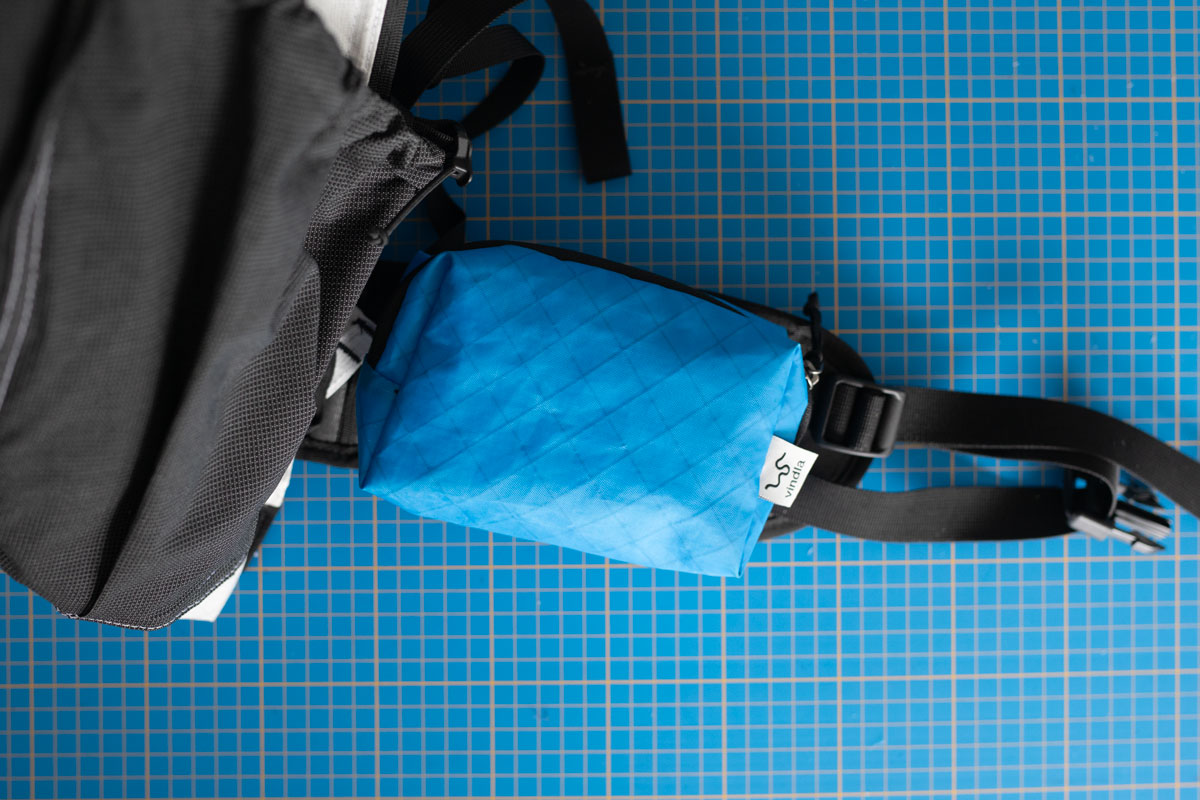
To attach the pocket:
1. Start by thread the top webbing toggles through the hole webbing from the top.
2. Thread the two bottom webbing toggles through the bottom hole webbig.
Measurements.
Volume and pack measurements are an important topic and also where weight & volume ration comes into play. There are kind of a standard way to measure the volume a pack but each brand seems to be doing this slightly different to each other and this will have quite a big impact on the over all volume and weight of the pack. So with that said try to find the measurements of the packs you are looking at and compare those.
Please note that the pack is handmade and the meassurments may vary approximately +/-1cm. The weight is also approximately and can wary sligtly.
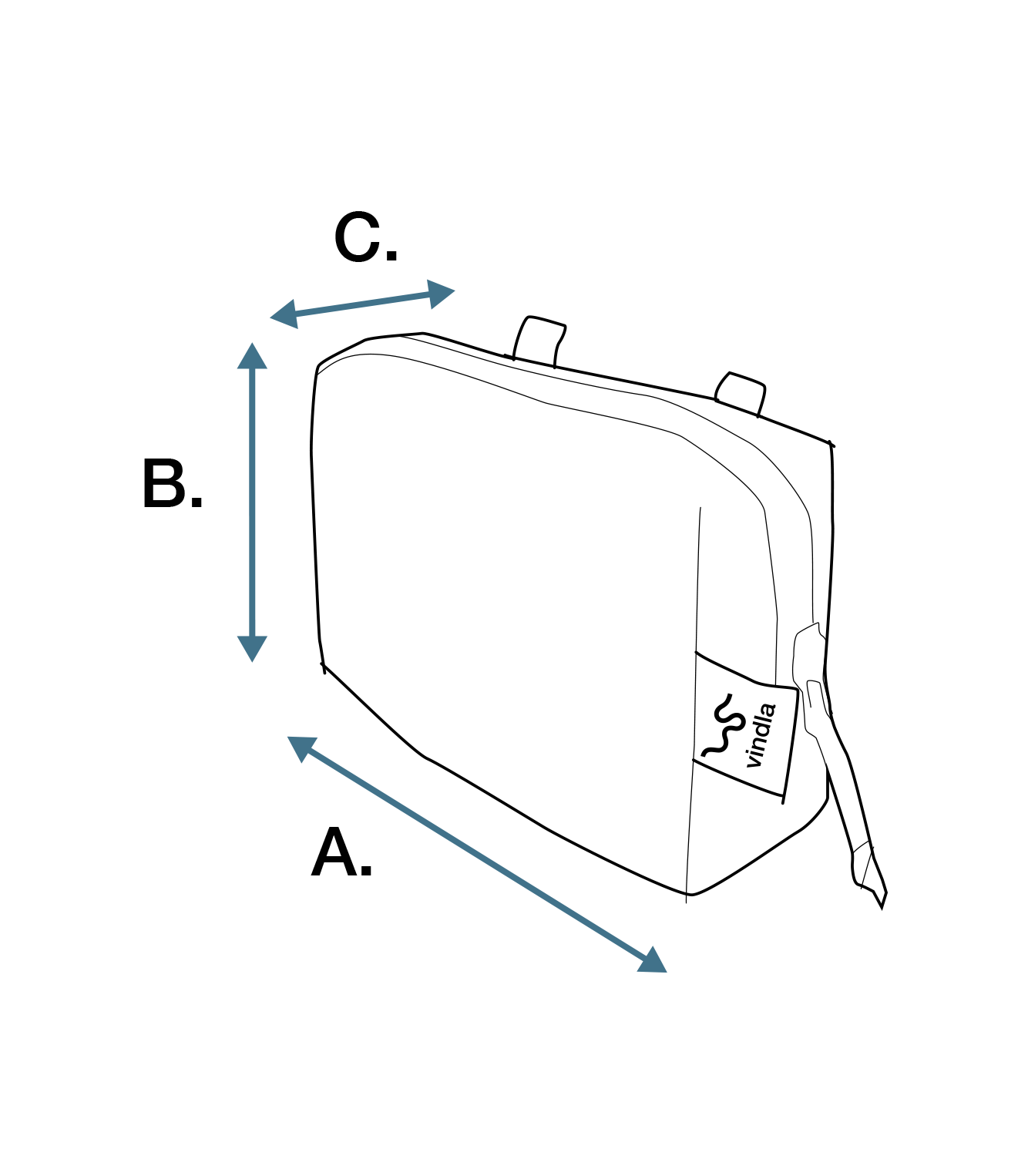
Measurements chart.
Volume & weight chart.
Measurements.
Volume and pack measurements are an important topic and also where weight & volume ration comes into play. There are kind of a standard way to measure the volume a pack but each brand seems to be doing this slightly different to each other and this will have quite a big impact on the over all volume and weight of the pack. So with that said try to find the measurements of the packs you are looking at and compare those.
Please note that the pack is handmade and the meassurments may vary approximately +/-1cm. The weight is also approximately and can wary sligtly.

Measurements chart.
Volume & weight chart.
Materials.
The hip belt pocket is built on recycled Polyester. This particular fabric is called ECOPAK™ EPX and is a laminate that consists of three layers. The outer layer is a 200d polyester. The inner layer is a reinforcement cross and then the final layer is a 70d ripstop backing.
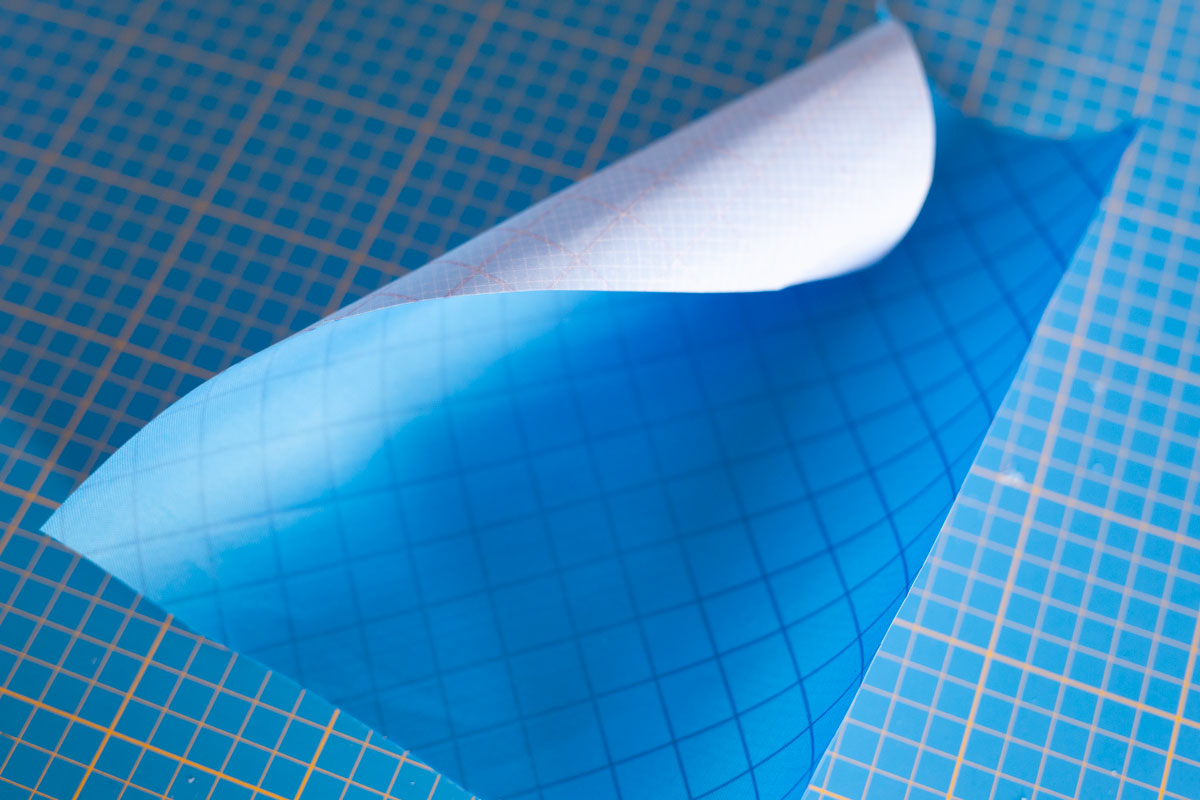
Sewn in-house in Nynäshamn, Sweden.
With over 15 years of experience designing and developing backpacks for other brands within in the outdoor industry, it’s finally time to unleash the full optional of our small in-house production studio. The initial production will be sewn right here in Nynäshamn just south of Stockholm.
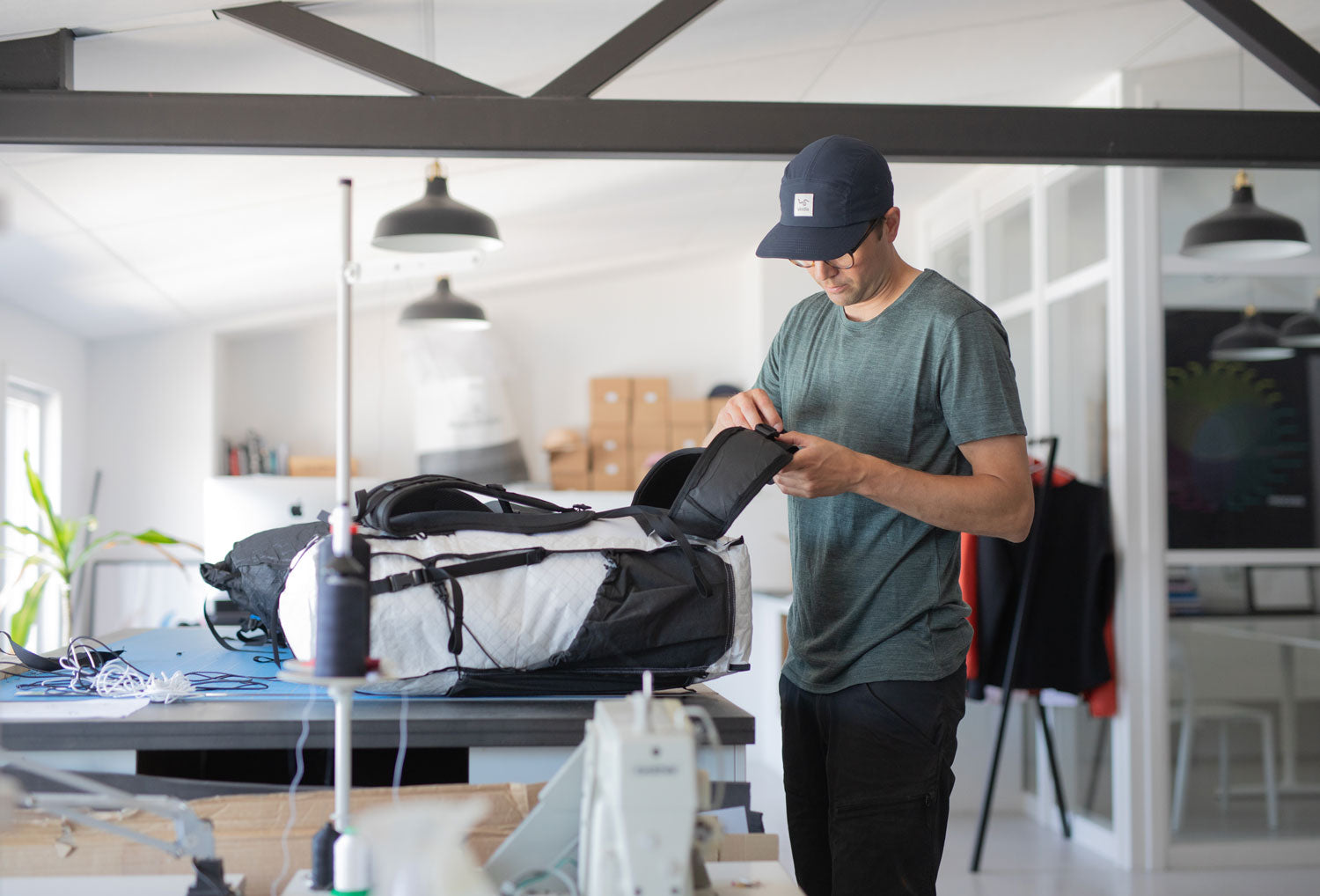
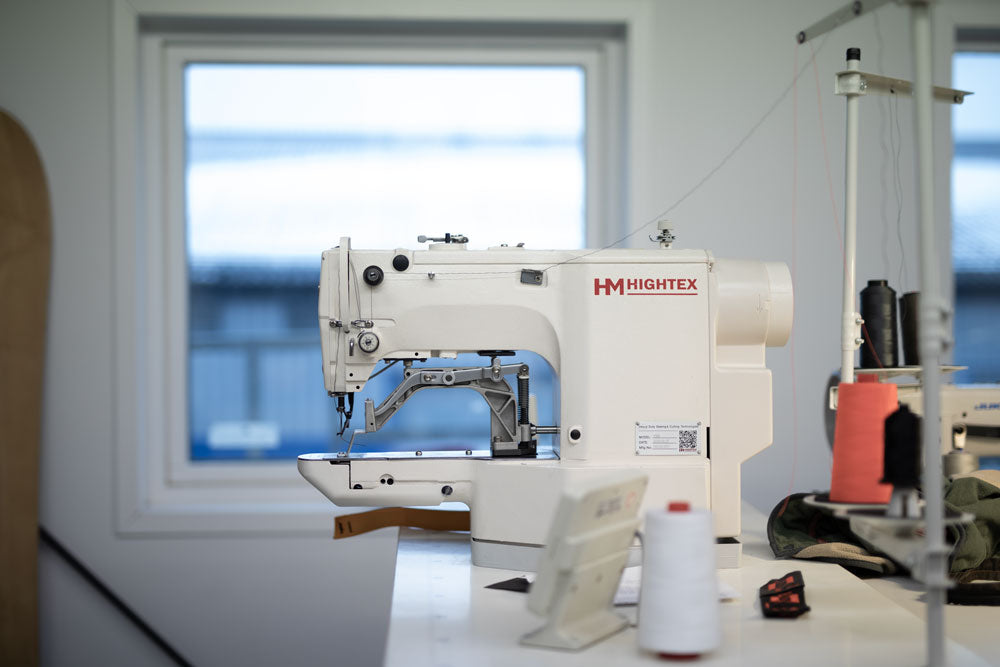

Content.
There are multiple types of materials used in our products, everything from wood, wool, plastics to metals. Each and every one of these materials are being made using a variety of processes. We choose our materials carefully both from how they are made to how they function but also to how they can be circulated once the product cannot be used any more.
* Really important to understand is that even if a single material in theory can be recycled or biodegraded there are today currently no standardised recycling or biodegrading systems for textile garments.
Origin.
We believe that transparency plays an extremely important role. Once one fully understand the complexity of production, one can start to change it and that is why we also want to share the true story behind our products.To really understand where a product has been made you have to break it down into all its components and materials. All these materials and components are almost never produced in the same place or country as where the product is sewn.
Care.
In addition to the garment-specific wash instructions, there are some general tips that can both extend the life of the garments and save you a lot of time in the laundry room.
Air: The absolute easiest and best way to keep your garments fresh is to air them. Some materials such as merino wool have natural antibacterial properties. This means that the garment stays fresh much longer. You will be amazed at how fresh the t-shirt feels after being aired on a hanger during the night.
Focus on the stain: Did you get a stain? Focus on it. It is often that garments are washed completely unnecessarily, when you really only need to remove a small stain. In most cases, it is enough to rub a little hand dishwashing detergent with lukewarm water on the stain. Then make sure to rinse thoroughly and hang to dry.
Detergent: Use the right detergent for the right material. There are a plenty of different detergents out there, so try to find a detergent that is both gentle on the environment and your garment. Some materials are a little more delicate, such as merino wool. For these garments, we recommend Organotex wool and down wash.
Specific care instrucitons: Hand wash cold.

Care.
In addition to the garment-specific wash instructions, there are some general tips that can both extend the life of the garments and save you a lot of time in the laundry room.
Air: The absolute easiest and best way to keep your garments fresh is to air them. Some materials such as merino wool have natural antibacterial properties. This means that the garment stays fresh much longer. You will be amazed at how fresh the t-shirt feels after being aired on a hanger during the night.
Focus on the stain: Did you get a stain? Focus on it. It is often that garments are washed completely unnecessarily, when you really only need to remove a small stain. In most cases, it is enough to rub a little hand dishwashing detergent with lukewarm water on the stain. Then make sure to rinse thoroughly and hang to dry.
Detergent: Use the right detergent for the right material. There are a plenty of different detergents out there, so try to find a detergent that is both gentle on the environment and your garment. Some materials are a little more delicate, such as merino wool. For these garments, we recommend Organotex wool and down wash.
Specific care instrucitons: Hand wash cold.


